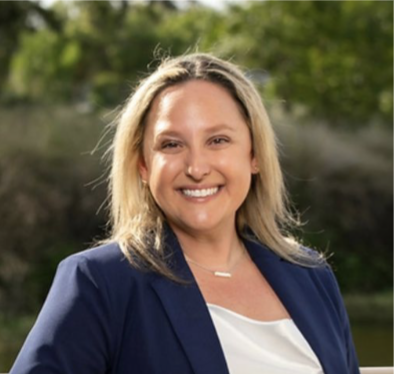Sensory Breaks for Your Autistic Child
Strategies for Homeschooling
Are there moments during your homeschooling day when you find your autistic child is seeking a sensory break to organize their body and mind? You’re not alone. According to the American Journal of Occupational Therapy, up to 95% of autistic children experience difficulty with sensory processing in at least one of the eight senses.
Autistic children benefit from sensory breaks during their homeschooling day to improve their attention to task, increase educational outcomes, and encourage an overall positive learning mindset. Adding simple, easy-to-replicate sensory breaks into your homeschooling curriculum will aid your child in regulating their body in the following areas:
- sight (visual)
- touch (tactile)
- hearing (auditory)
- smell (olfactory)
- taste (gustatory)
- proprioception (movement)
- vestibular (balance)
- interoception (internal)
A sensory break can be defined as a designated portion of time that focuses on specific input a child may be seeking or avoiding for self-regulation. For instance, activities involving pushing, pulling, stretching, spinning, completing heavy work, or tactile exploration. Sensory activities will assist in regaining your child’s focus and concentration.
As parents or caregivers of autistic children in a homeschool setting, it may be challenging to decide which activities or tools are most appropriate for your child. The ARIS® Academic Readiness Intervention System is a program designed by STAGES® Learning with sensory breaks and activities built into lessons so that you do not have to have a background in occupational therapy or ABA training to properly integrate sensory breaks into your day. It takes the guesswork out of teaching!
Let’s take an in-depth look into the core sensory systems (proprioception, vestibular, tactile) that sensory breaks focus on and dive into specific sensory activities to implement into your daily routine.
Locate Your Body in Space
Proprioception is defined as your body’s ability to sense movement, location, and action. It allows us to understand body awareness within our muscles and joints. Proprioceptive input can be very calming for those who are overwhelmed by sensory input; however, it can also provide alertness for those who require even more input.
Autistic children who display difficulties with proprioception usually have frequent falls or are uncoordinated with their movements. They may also put too much pressure on their writing utensil or bump into things often. Sensory breaks that focus on providing proprioceptive input will aim to achieve enhanced learning readiness and emotional regulation.
Proprioceptive sensory breaks that you can try in the homeschooling setting include:
Heavy Work
Have your child carry a full laundry basket from one room to another, bring groceries from the car to the kitchen, push a vacuum cleaner, or simply play catch with a weighted ball. You may also want to try a game of tug of war, stack soup cans, collect rocks in a bag from the backyard, have your child carry small weights in their backpack, or groom your household pet.Deep Pressure
Massage your child’s arms and legs with increased touch, wrap your child in a blanket to form a “burrito” and roll them back and forth, give your child a big bear hug, or have your child lie on their stomach and roll a weighted ball over their arms and legs. You may also want to incorporate a Snug or Peapod in a cozy corner of the house or provide a Privacy Cube. Deep-pressure activities will calm and comfort your child if they are overwhelmed by table-top homeschooling classwork.Weighted Resources
Encourage weighted items found in the home (i.e. heavy bedding/comforter or pillow) or bring a weighted lap blanket/pad into a home-made fort.
Find Your Balance
The vestibular system is located in our inner ears and is the sensory system responsible for the body's ability to balance and maintain orientation in space.
Autistic children may demonstrate trouble with balance, maintaining proper posture, or eye gaze during daily activities. They may struggle with becoming overstimulated or understimulated by vestibular input during their homeschooling day, making it difficult to find their center.
For the autistic child who is overstimulated, gentle exercises are recommended. The under-stimulated child would do better with more vigorous activities.
Here are some easy-to-do home activities that target the vestibular system:
The Overstimulated Child
- Calming/relaxation techniques like yoga Cosmic Kids Yoga
- Deep belly breathing Belly Breathing
- Rocking back and forth in a rocking chair
- Gentle marching in place
- Slow bouncing on a weighted yoga ball
The Understimulated Child
- Enjoy a dance party (GoNoodle)
- Play outdoors- running, jumping, skipping, spinning or galloping
- Engage in animal walks (bear walks, crab walks, frog jumps)
- Make an obstacle course
- Wheelbarrow walking
- Riding a bike
- Play a game of head, shoulders, knees and toes

Learn Through Touch
The tactile system is our body's largest sensory system. It is the way we perceive our sense of touch. It helps us understand sensations like pressure, hot/cold, and pain.
Autistic children may over-respond or under-respond to tactile stimuli. If they over-respond, they will avoid touching certain textures or can be very picky eaters. By under-responding, your child may be seeking to constantly touch things, fidget with objects, or explore all the different touches in their environment.
Take a look at some fun and engaging tactile system sensory breaks for you to perform with your little one:
- Allow for opportunities to touch different textures and discuss how they look and feel.
- Get messy! Play with Play-Doh, squirt water, fingerpaint, or make slime.
- Write or draw with a vibrating pen or squeeze a vibrating stuffed animal.
- Encourage Fidgets and Sensory Toys.
- Make a sensory bin with rice or beans and hide objects for your child to find.
- If your child tends to put everything in their mouth, try a sensory chewy break like a Chewy Necklace.
Sensory Breaks Tips and Tricks
- Sensory breaks can be scheduled or unscheduled. Utilize a visual timer to help identify the length of the sensory break for effective transitions to the next activity. Typically, sensory breaks are no more than five to ten minutes in duration.
- If your child benefits from sensory tools like Wiggle Cushions or Bouncybands, ensure that they are available to them at all times during the homeschooling day.
- Offer a variety of sensory breaks to sustain your child’s interest. Do not be discouraged if you try an unsuccessful activity. Adjust your approach based on your child’s verbal and visual cues.
- Establish a comfortable spot in the house for your child to go to de-escalate during a sensory break, if necessary.
- Encourage your child to advocate when they need a break. This can be done verbally or through a visual support (i.e. break card).
- Make the sensory break a whole group activity. Everyone benefits from movement and brain breaks during tedious tabletop tasks!
- Consider consulting an occupational therapist or behavior specialist for further strategies and techniques for sensory regulation specific to your child’s unique needs.

Sensory breaks built into your homeschooling environment will improve your child’s sensitivities to outside stimuli, increase their focus, assist with emotional regulation, and lead to academic gains.
Let us know which sensory breaks you are finding most effective for your child during their homeschooling day.
For more on Integrating Sensory Insights and Strategies see our Webinar: Integrating Sensory Insights and Strategies: From Stress to Success
We hope you enjoyed the information in this article. Stages Learning also offers free downloadable resources to support teaching and learning with autistic individuals. Start with our free Picture Noun Cards and see our collection of other downloadable resources here!

Samantha Russell
Samantha Russell is a pediatric occupational therapist who has worked in public school systems across several states supporting children with learning challenges and varying exceptionalities for more than a decade. She received her undergraduate degree from the University of Florida with a Bachelor of Science in Health Education and a minor in Dance. She continued her education at the University of Augustine for Health Sciences where she earned a Master of Occupational Therapy. Her passion is to encourage and promote her students to be as functional as possible in their educational environment, while providing essential resources/tools to parents, caregivers, teachers and school support staff. Samantha lives in Saint Augustine, Florida with her husband and three young children.




